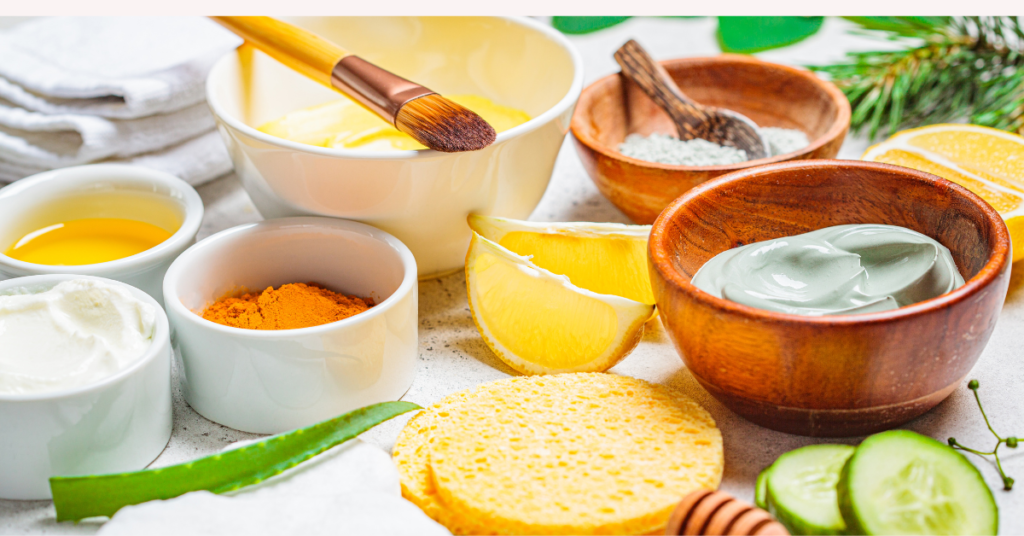Inactive ingredients in skincare products are substances that do not have any therapeutic effect but are added to support and enhance the active ingredients. These ingredients can range from fillers and preservatives to fragrances and texture enhancers.
While they may not directly contribute to treating skin concerns, they play an important role in improving the overall product effectiveness and sensory experience.
It is crucial to understand the inactive ingredients in skincare to make informed choices based on personal preferences and any potential allergies or sensitivities.
By knowing what goes into skincare products, individuals can ensure they are using the most suitable and safe products for their skin.
Differentiating Active Vs. Inactive Ingredients
Inactive ingredients in skincare are the fillers and stabilizers that support the active ingredients and enhance their effectiveness.
Examples include preservatives, fragrances, and texture enhancers. While not directly affecting skin concerns, they play a crucial role in product absorption and stability.
Defining Active Ingredients
Active ingredients are the potent substances in skincare products that provide specific benefits and produce visible results.
They are typically botanical extracts or chemicals that target various skin concerns such as reducing wrinkles, brightening the complexion, or soothing irritation.
These active ingredients are carefully formulated and tested to ensure their efficacy and safety.
Explanation Of Inactive Ingredients
Inactive ingredients, on the other hand, are the supporting elements that work alongside the active ingredients.
While they may not have direct benefits for the skin, they serve important functions in skincare products. Inactive ingredients can include vehicles, binding agents, buffers, fillers, lathering agents, stabilizers, preservatives, texture enhancers, and fragrances.
Some examples of inactive ingredients commonly found in skincare products are lactose, gluten, sugar, and dyes.
These ingredients are usually well-tolerated by most people and do not affect their choice of skincare products.
However, it’s essential to note that individuals with specific dietary restrictions or allergies might need to avoid certain inactive ingredients for religious, health, or personal reasons.
Inactive ingredients also play a crucial role in ensuring the stability, texture, and shelf life of skincare products.
They help to improve the overall sensory experience, such as the feel, scent, and appearance of the product. In addition, some inactive ingredients can assist in delivering and enhancing the absorption of active ingredients into the skin, boosting their effectiveness.
While inactive ingredients may not be the star players, they are essential components of skincare formulations.
Manufacturers carefully select and combine these ingredients to create well-balanced and effective products for achieving healthy and radiant skin.

Functions Of Inactive Ingredients
Inactive ingredients in skincare products play a crucial role in supporting active ingredients and enhancing the overall effectiveness of the product. Understanding the functions of these inactive components is essential for making informed skincare choices.
Supporting Active Ingredients
Inactive ingredients act as carriers and support active ingredients in penetrating the skin. These components aid in the stabilization and delivery of the active compounds, ensuring their efficacy in targeting specific skincare concerns.
Whether it’s emollients that help in moisturizing the skin or preservatives that maintain the product’s shelf life, inactive ingredients facilitate the function of the active elements.
Enhancing Product Effectiveness
Inactive ingredients also play a role in enhancing the overall effectiveness of skincare products. Ingredients such as emulsifiers help in creating a blend of water and oil-based skincare formulations, while humectants assist in retaining moisture, resulting in hydrated and healthy skin.
Additionally, fragrances and texture enhancers contribute to the sensorial experience of the product, making it more appealing and user-friendly.
Common Inactive Ingredients
Many skincare products, including lotions, creams, and serums, contain a variety of inactive ingredients that play a crucial role in the overall quality and effectiveness of the product.
While these ingredients may not be the primary active agents, they can significantly impact the user’s experience and the product’s performance.
Examples Of Inactive Ingredients
Common inactive ingredients found in skincare products include:
- Emollients
- Humectants
- Preservatives
- Fragrances
- Thickeners
Potential Impact On Different Individuals
Given the diverse nature and sensitivity of individuals’ skin, these inactive ingredients can have varying effects.
For instance, individuals with sensitive skin may react adversely to certain fragrances or preservatives, resulting in irritation or allergic reactions, while others may tolerate these ingredients without any issues.
The Role Of Inactive Ingredients In Skincare Products
When it comes to skincare products, we often focus on the active ingredients that work their magic on our skin.
While active ingredients are important, we cannot overlook the role of inactive ingredients. Inactive ingredients may not directly target specific skin concerns, but they play a crucial role in the effectiveness, texture, and preservation of skincare products.
Preservatives And Fillers
Preservatives and fillers are two common types of inactive ingredients found in skincare products. Preservatives are added to prevent the growth of bacteria, mold, and other microorganisms that could spoil the product.
Fillers, on the other hand, are used to add volume and texture to the product, ensuring it spreads easily and feels luxurious on the skin.
Preservatives ensure that your skincare product remains safe and stable for an extended period. They protect the active ingredients from degradation, allowing them to retain their potency and effectiveness.
Fillers, on the other hand, help provide the desired consistency and texture to the product. They enhance the application experience and allow the product to glide smoothly across the skin.
Texture Enhancers And Fragrances
Texture enhancers are another category of inactive ingredients that can have a significant impact on the feel and application of skincare products.
These ingredients are designed to improve the product’s texture, making it easier to spread and absorb into the skin. They can range from emollients that provide hydration and softness to thickeners that give the product a rich and creamy texture.
Fragrances, although not essential for skincare functionality, are often added to enhance the sensory experience of using the product. They can create a pleasant aroma, making the skincare routine more enjoyable.
However, it is important to note that fragrances can sometimes cause irritation or allergies in some individuals. Therefore, it is advisable to opt for fragrance-free products if you have sensitive skin.
Inactive ingredients may not be the star of the show in skincare products, but they play vital supporting roles.
From preserving the product’s integrity to enhancing its texture and sensory experience, the right combination of inactive ingredients can make a significant difference in the overall effectiveness and user experience of skincare products.
Active Vs. Inactive Ingredients Debate
When it comes to skincare products, the debate between active and inactive ingredients often takes center stage.
Active ingredients are the stars of the show, providing the primary benefits such as anti-aging, hydration, or acne treatment.
On the other hand, inactive ingredients play a crucial supporting role, aiding in the delivery and effectiveness of the active ingredients.
Do Inactive Ingredients Matter?
- Inactive ingredients may seem secondary, but they serve essential functions in skincare products.
- Fillers, coatings, and preservatives are some common types of inactive ingredients.
- They help facilitate the absorption and action of active ingredients in the skin.
Balancing Act Of Active And Inactive Ingredients
Finding the right balance between active and inactive ingredients is key to formulating effective skincare products.
The active ingredients target specific skin concerns, while the inactive ingredients support their functionality and enhance overall product performance.
- Active ingredients deliver specific skincare benefits.
- Inactive ingredients aid in the absorption and stability of active ingredients.
- Combining both types of ingredients creates a synergistic effect for optimal results.
Choosing Skincare Products Wisely
Understanding what’s in your skincare products can impact your skin’s health.
- Active ingredients are the main components that provide benefits.
- Inactive ingredients assist in stabilizing and enhancing product effectiveness.
Know your skin type and concerns to avoid irritations or reactions.
- Test new products on a small patch of skin to check for reactions.
- Avoid products containing ingredients you’re sensitive to.
Frequently Asked Questions
What Is An Example Of An Inactive Ingredient?
Inactive ingredients in skincare products can include lactose, gluten, sugar, preservatives, and dyes. These ingredients do not affect the choice of medicine for most people, but some individuals may have allergies or faith-based restrictions that prevent them from taking certain inactive ingredients.
What Is The Difference Between Active And Non Active Ingredients In Skincare?
Active ingredients in skincare products actively target skin concerns. Inactive ingredients support active ingredients for effective results.
Do Inactive Ingredients Matter?
Inactive ingredients are important in medication to help active ingredients work effectively. They can be fillers, flavors, coatings, or preservatives.
What Are The Active Ingredients In Skin Care?
Active ingredients in skincare products are the powerhouse ingredients that do the work, targeting specific skin concerns. They can be botanical extracts or chemicals. Inactive ingredients, on the other hand, support the active ingredients and help them work more effectively.
Conclusion
To wrap up, understanding inactive ingredients in skincare is crucial for making informed choices about the products we use on our skin. While active ingredients are the star players, inactive ingredients play essential supporting roles, aiding in absorption, texture, and stability.
Ingredients such as fillers, preservatives, lathering agents, and fragrances all contribute to the overall effectiveness of skincare products. By being knowledgeable about both active and inactive ingredients, we can better care for our skin and achieve desired results.

